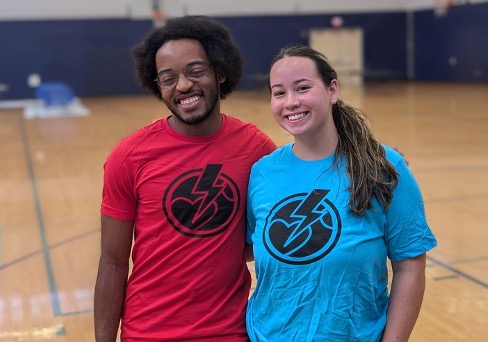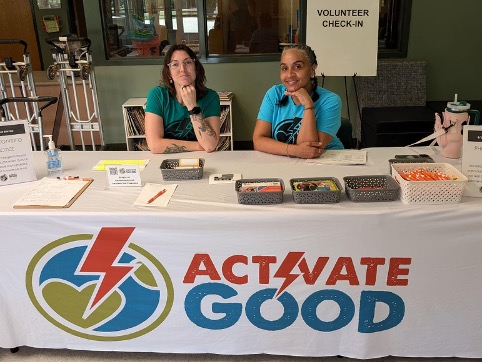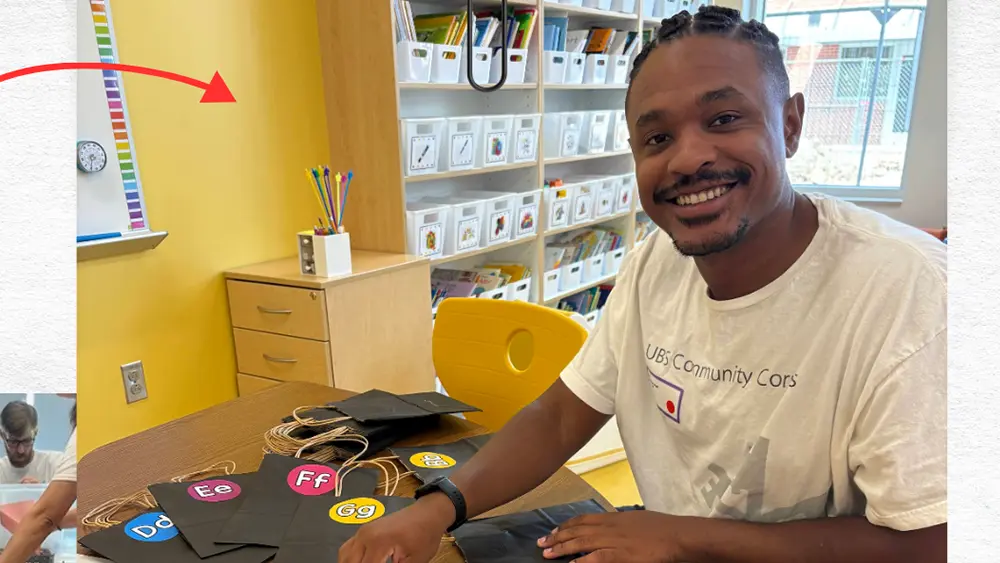Explore national data on volunteering trends—who’s showing up, how they’re getting involved, and what it all means for the future of nonprofit engagement.
Volunteering is shifting and fast. From students logging virtual hours to retirees returning to in-person service, the face of volunteerism in 2025 looks different than just a few years ago. But how many people sign up to volunteer each year, and who exactly is showing up to help?
In this comprehensive analysis of volunteering statistics 2025, we’ll examine who’s showing up to help, what motivates them, and why these trends matter for nonprofit organizations, community groups, and anyone looking to build a stronger, more connected future.
How many people are signing up to volunteer each year?
According to the latest data from the U.S. Census Bureau and AmeriCorps over 75.7 million people in the U.S. formally volunteered (helping others through organizations like food banks and other non-profits) between September 2022 and September 2023.
That’s 28.3% of the U.S. population aged 16 and older. This five-point increase from previous years brings volunteerism close to pre-pandemic levels.
This growth isn’t just a return to “normal”; it’s a reminder that people are eager to reconnect and give back. Volunteers are showing up. The question is, are we making it easy for them to participate?
At the same time, informal helping behaviors are increasing. 54.2% of Americans reported assisting neighbors with informal tasks like running errands, lending tools, or providing caregiving, up from 51.7% in 2019 (U.S. Census Bureau and AmeriCorps, 2023).
This shows that even when people are not registered with an organization, they still dedicate their time to assisting others in meaningful ways.
Service is happening all around us, inside and outside of structured volunteer programs.
Who volunteers? A look at 2023 demographics.
Who are the 75.7 million volunteers? According to 2023 data from the U.S. Census Bureau and AmeriCorps, formal volunteering is on the rebound, and informal helping is continuing to climb.
Between 2021 and 2023, the biggest relative gains in formal volunteering were among:
- Millennials (ages 27–42)
- People with incomes under $25,000
- Individuals with less than a high school diploma
- Asian, Native Hawaiian or Pacific Islander, and Hispanic Americans
Current volunteering statistics by generation show:
- Gen X leads in formal volunteering (27.2%)
- Baby Boomers dominate informal helping (58.7%)
As volunteers continue to reflect diverse ages, income levels, and life experiences, nonprofits have a growing opportunity to create more inclusive and flexible ways for people to get involved.
What Motivates Volunteers in 2025?
Today’s volunteers aren’t necessarily looking for long-term loyalty. They want to use their time and skills to make an impact on their own terms.
So, what’s driving people to lend a hand?
- A desire to reconnect with their community after years of isolation
- Flexible opportunities that can fit into a busy schedule
- A chance to make a tangible difference on issues they care about
 These motivations show up in the types of roles people choose. Between 2003 and 2021, data from Hager and Brudney (2021) found that volunteers preferred short-term, project-based roles over long-term commitments.
These motivations show up in the types of roles people choose. Between 2003 and 2021, data from Hager and Brudney (2021) found that volunteers preferred short-term, project-based roles over long-term commitments.
Also known as episodic volunteering, these roles:
- Require less time upfront
- Are often skills-based
- Attract people who want to help when and how they can
This shift is especially evident on platforms like Catchafire, which connect volunteers with short-term, high-impact projects. In November 2024 alone, Catchafire alone facilitated over 14,000 volunteer engagements compared to its 2,700 engagements in 2020.
Whether it’s a weekend park cleanup or a one-time graphic design project, volunteers are clearly seeking opportunities that offer flexibility, impact, and purpose.
How Volunteers Find Opportunities in 2025
Volunteers are finding these opportunities in a few key ways.
According to the 2025 Nonprofit Communications Trends Report, volunteers are engaging through several channels:
- Email remains the top performer, with over 80% of nonprofits saying email is somewhat or very effective for recruitment.
- In-person events (73%) and organization websites (71%) also play a significant role.
- Social media is growing fastest, with Instagram (53%), LinkedIn (48%), and Facebook (44%) seeing the most growth for engagement.
It’s not just about engagement, either as these platforms are also driving giving behaviors.The 2024 Nonprofit Tech for Good “Online Donor Feedback Survey” found that:
- 33% of online donors say email inspires giving the most
- 29% say social media, especially Facebook and Instagram, are most influential
- 38% have donated through Facebook, and 70% of them say they would again
- 12% have donated through Instagram, with 83% saying they would donate again
- 36% have scanned QR codes from print materials, posters, or billboards to donate or sign up
Based on the data, we can see that volunteers and donors are everywhere. Meeting them where they are is key, whether its online, in their inbox, on social media or at a community event.
Why These Volunteering Trends Matter for Nonprofits
Volunteers often become some of your most loyal advocates, donors, and board members. That’s why it’s so important to understand how they engage and where they’re coming from.
When nonprofits take the time to track these trends, they can:
- Tailor outreach to the right platforms and audiences
- Offer more inclusive opportunities
- Build stronger relationships that lead to future giving
 It’s also important to design with the user experience in mind. While 57% of website traffic now comes from mobile and tablet devices, 75% of donations still come from desktops (M+R Benchmarks 2023). That means designing seamless mobile sign-up forms and donation experiences is no longer optional; they’re essential.
It’s also important to design with the user experience in mind. While 57% of website traffic now comes from mobile and tablet devices, 75% of donations still come from desktops (M+R Benchmarks 2023). That means designing seamless mobile sign-up forms and donation experiences is no longer optional; they’re essential.
Based on these trends, here are five practical steps your nonprofit can take to better engage today’s volunteers:
Design short-term and flexible roles to fit busy schedules
Use email + social to share real stories and clear calls to action
Prioritize inclusive messaging that reflects diverse volunteer demographics
Offer at least one virtual opportunity to expand your reach
Track engagement so you can keep refining what works
These strategies can help your organization stay responsive, relevant, and ready to build long-term relationships through meaningful service.
5 Strategies to Engage Today’s Volunteers
Based on current volunteering statistics and trends, here are five actionable strategies your nonprofit can implement:
- Design flexible, short-term roles that accommodate busy schedules
- Leverage email and social media to share authentic stories with clear calls to action
- Prioritize inclusive messaging that reflects diverse volunteer demographics
- Offer virtual volunteering opportunities to expand your reach
- Track engagement metrics to continually refine your approach
These evidence-based strategies can help your organization remain responsive, relevant, and ready to build lasting relationships through meaningful service.
The future of volunteering starts with understanding who’s involved
Millions of people sign up to volunteer every year, and your nonprofit’s key question is how you’re making space for them.
Volunteering in 2025 is not a one-size-fits-all approach. It is flexible, digital, community-rooted, and increasingly diverse.
At Activate Good, we’re redefining what it means to get involved. Volunteering is one way to make an impact and create transformational change. We believe the future of service is flexible, inclusive, and powered by people who care.
Whether you are a nonprofit leader or a first-time volunteer, you have the opportunity to make an impact.
Learn more about our approach to creating the world we envision.
Explore volunteer opportunities at volunteer.activategood.org.


